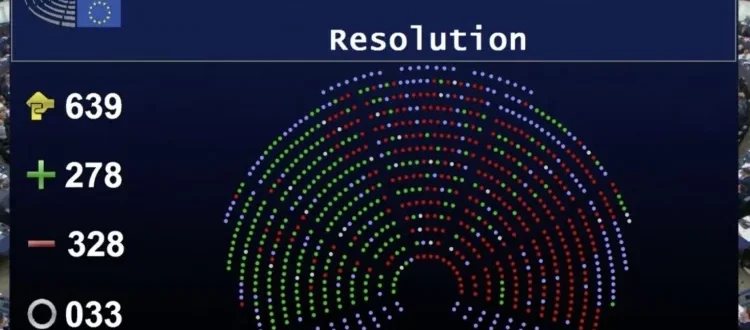TAXONOMY, A PARTIAL DEFEAT FOR THE EUROPEAN GREEN DEAL
On 6 July, the European Parliament rejected the opposition presented by some political forces to the European Commission’s proposal for a Taxonomy for eco-sustainable investments. Such proposal, in its revision approved by the European Commission on 2 February 2022, included natural gas and nuclear energy among the “transition technologies” towards a decarbonised economy. Therefore, with the non-opposition of the Parliament and the approval of the European Council on 12 July (which is a foregone conclusion), the Taxonomy will enter into force as such on 1 January 2023.
But what is it all about? Will the new classification entail obligations for investors?
Let’s go in order. The path to adopting a European Taxonomy of Green Investments, i.e. a dictionary of green financial products and activities, goes back a long way and took its first steps during the Juncker Commission, well before the European Green Deal. In fact, drawing up a unambiguous Europe-wide definition of green investment, compatible with climate objectives, was deemed necessary both in Brussels and by numerous stakeholders in industry and finance. Recent studies indicate how financial markets and markets supporting industrial activities are now closely linked to criteria of sustainability (or visibility thereof), before investors as well as the general public, i.e. their consumers).
So in 2018, after years of work, the European Commission launched the Action Plan on Financing Sustainable Growth, with the aim of redirecting capital flows towards sustainable investments aligned with the EU’s international commitments. The same plan envisaged the adoption, initially planned by 2020, of a Taxonomy aimed at indicating unquestionably which are the ‘activities that finance the transition’, and which are not. A precious piece of information also for the many investors lost in the jungle of national or internal regulations within their sectors. A new, one-size-fits-all regulation, ready to enter into force continent-wide without having to go through national parliaments.
In December 2020, the Taxonomy Regulation was passed, with the ambition to provide clear rules in the definition of financial products for green assets. It is worth noting that the strengthened regulation also indicated the obligation for large companies to declare the percentage of their activities (in their turnover) in line with the Taxonomy. Such obligation stemmed from the vision for which pressure from investors and consumers will tend to lead entrepreneurs and investors to reorient production, until environmentally harmful activities gradually disappear from the market.
A first tool to bring order is to set targets. The European Taxonomy has, indeed, 6 specific objectives:
- contribute to climate change mitigation;
- contribute to climate change adaptation;
- promote the sustainable use and protection of water and marine resources;
- promote the transition to a circular economy;
- preventing and reducing pollution;
- promote the protection and restoration of biodiversity and ecosystems.
The first two objectives, adaptation and mitigation, are seen as central to the other four according to an internal hierarchy. The Regulation also specifies that, in order to be considered sustainable, each investment and activity will have to:
- contribute substantially to at least one of the six objectives;
- not cause significant harm (Do Not Significant Harm, DNSH) to the achievement of the other five;
- be in line with minimum social safeguards, e.g. those identified by the ILO.
This system of dual safeguards for environmental and social objectives applies to a wide variety of economic activities, which can be summarised and classified into activities that are already low or negative emitters, activities in transition, and so-called enabling activities, i.e. those that enable emission reductions in other activities, as well as adaptation activities.
But which technologies have been included in the Taxonomy? Or rather, which investments in energy production technologies will meet the criteria listed above? Here is the most political crux of the matter. In the first drafts drawn up by the technical working groups, investments in the development of natural gas networks and distribution, as well as energy from nuclear sources, were not initially contemplated. With a final revision of the act approved on 2 February, however, the Commission included natural gas and nuclear energy among the ‘transitional’ energies in the draft taxonomy, with the contrary opinion of the technicians, as mentioned. While this decision aroused the opposition of the environmentalist world in some countries, primarily Austria, Luxembourg, Spain and – at least initially – Germany, the governments of France and Poland, on the other hand, were satisfied with it, respectively due to the importance of nuclear power in the French energy mix and the strong use of natural gas as a transitional energy out of coal. The Russian-Ukrainian conflict and its repercussions in terms of energy emancipation from Russian fossil fuels then brought a certain consensus on the revised document also from many Italian and German policy makers.
Finally, a proposal to oppose the document was put on the agenda in the European Parliament on 6 July, that is to say the last step before entering into force in less than six months, as the new Taxonomy would hardly have found opposition in the Council. The centre-left, left-wing and environmentalist political forces tried until the last minute to convince the undecided right and centre-right to follow them in sending the act back to the Commission, but with 278 votes in favour of the veto, 328 against and 33 abstentions, the European Taxonomy will enter into force with natural gas and nuclear power.
Let’s make some clarity: the taxonomy will merely be an investment guide, non-binding in the broad sense. A dictionary, in fact, with no formal obligation for investors to invest in one sector rather than another. Yet it will be market dynamics and politics that will determine where financial capital will be directed most, certainly no longer in investments in coal and other fossil fuels, but – there would not have been so much political wrangling otherwise – largely in natural gas and new nuclear energy.

Serena Giacomin, President of the Italian Climate Network, commented: “The entire approval process of this European Green Taxonomy, from last February to the latest vote in the European Parliament, represents a partial and avoidable defeat with respect to the ambition of the European Green Deal. Nonetheless, we are confident that the decarbonisation path is now undertaken and inevitable. Climate-changing technologies will be less and less attractive in the eyes of the public and investors, despite regulations and emergency measures related to the current international scenario.”
by Jacopo Bencini, Policy Advisor and UNFCCC Contact Point Italian Climate Network

